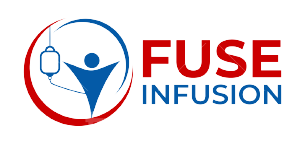What is Reclast Infusion? Explained Briefly.
Do you experience any brittleness in your bones? Then this is a condition of osteoporosis that you are facing. You must be thinking of a possible solution for treating this. Reclast infusion treatment is used for treating the condition of osteoporosis.
The Reclast is another name for zoledronic acid which doesn’t only useful in the treatment of osteoporosis but also treats multiple myeloma and any form of cancer that metastasizes to the bone, osteoporosis, and cancer-related elevations in blood calcium levels.
The amount of Reclast given to any individual varies and mainly depends on the condition which needs the treatment. So, in this blog, we will go through the reclast infusion and what are its serious side effects on an individual. So, without any further ado, let’s proceed to move on:
Reclast Infusion
A bisphosphonate called Reclast (zoledronic acid) is a medication used to treat or prevent Paget’s disease or osteoporosis. Reclast is an infusion into the bloodstream, as opposed to other common bisphosphonates that are taken by mouth and therefore pass through the stomach.
Living tissue that is always undergoing remodeling is bone. As bisphosphonates selectively affect bone cells (osteoclasts), they can slow down the progressive loss of bone mass and lower fracture risk.
How Reclast (Zoledronic Acid) Works?
Reclast (Zoledronic acid) is a bisphosphonate compound. In order to produce new, strong, and healthy bone, bisphosphonates slow down the degradation of the existing bone.
Bone mineral density (BMD), a measurement of how dense your bones are, is increased by zoledronic acid (Reclast). The risk of bone fractures is decreased by having a greater BMD, which indicates that your bones are stronger.
Reclast is used for:
- Paget’s disease
- Osteoporosis in males
- Long-term use of Corticosteroids leads to osteoporosis
- During menopause, some women develop osteoporosis (postmenopause)

Reclast Infusion Treatment
Reclast is basically zoledronic acid and is given as an infusion in the vein; that’s why it is called a reclast infusion treatment. Zoledronic acid is administered as a 15-minute infusion via a vein in your arm, which means it lasts for 15 minutes.
Two glasses of liquid should be consumed at least an hour before receiving your infusion. Before your infusion, you are free to eat as usual.
Every year, zoledronic acid infusions are given. A medical expert must administer the infusion. If you have kidney issues, are breastfeeding, are pregnant, nursing, have low blood calcium, or are on Zolendronic acid, you should not do so.
Benefits of Reclast Infusion Treatment
The reclast infusion treatment offers different benefits to a patient when a patient receives it:
- Reduces the chance of fractures in several areas of the body, such as the hip and the back
- Not frequently require infusions (one-time only or every 1 or 2 years)
- There are no limitations on when to consume food, beverages, or any drugs.
- It may be used for individuals who are unable to take other bisphosphonates due to difficulty swallowing or excessive stomach ache.
- Can be thought about for those who have a very high fracture risk (have had a recent fracture caused by osteoporosis, fracture while taking osteoporosis medications, or have many risk factors for fracture)
Reclast: Risks and Warnings
Reclast, which contains zoledronic acid, can seriously harm your health. Some groups may be an even greater danger than others. See your physician or chemist about other possibilities if this troubles you.
Jaw Breakdown (Osteonecrosis)
Reclast, though uncommon, can weaken and disintegrate the jawbone. If you have bone surgery near or in your mouth, have dental implants, have a tooth extracted, or have an infection in your mouth that hasn’t healed while taking Reclast, this breakdown is more likely to occur.
Kidney Damage
Particularly in those who already have kidney issues or who are taking drugs that can also damage the kidneys, Reclast can damage the kidneys. Before each infusion, blood tests must be performed to ensure that your kidneys are in good condition.
To avoid kidney damage, ask your doctor how much fluid you should consume before each infusion.
Decrease Calcium levels in the Blood
Your blood calcium levels may be reduced with Reclast. Those who already have low calcium levels or other abnormal electrolyte levels must get treated for these issues before beginning zoledronic acid in order to keep their calcium levels from falling to dangerously low levels (Reclast).
Reclast users with Paget’s disease are more likely to experience low calcium levels. You should supplement with calcium and vitamin D to help prevent low calcium levels
Fractures in Leg Bone
Extremely occasionally, Reclast users may get leg bone fractures with no recognized cause (Reclast). Stop taking zoledronic acid immediately and consult your doctor if you experience any new dull or agonizing hip or thigh discomfort (Reclast).
Muscular, Severe Joint or Bone Pain
Rare but severe bone, joint, or muscular pain has occasionally been experienced by Reclast users. One day to several months after using the Reclast, it may occur. Speak with a healthcare professional immediately away if you have excruciating pain in these places.
Now, let’s move forward to know the reclast infusion side effects and which side effects may remain for a longer time:
Side Effects of Reclast Infusion
The reclast infusion method is used to treat osteoporosis and any kind of cancer related to the bone. Some of the other side effects of reclast infusion include:
- Tiredness
- Cough
- Headache
- Nausea
- Symptoms related to flu such as chills, fever, joint pain
- Headache
- Dizziness
- Vision Problems
- Diarrhea
- Injection site reaction
- Constipation
The majority of these side effects appear three days after treatment.
Inform your doctor right away if you experience any severe Reclast side effects, such as urinating less frequently or not at all, drowsiness, confusion, mood swings, increased thirst, appetite loss, nausea, weight gain, swelling, muscle spasms, numbness or tingling (especially around your mouth), fever, chills, body aches, flu-like symptoms, pale skin, susceptibility to bruising easily, unusual weakness, lightheadedness, severe joint/bone/mus (wheezing, chest tightness, trouble breathing).
Reclast Dosage
Reclast is infused intravenously into the body of a patient. Receiving Reclast intravenously. The dosage varies according to the illness being treated. The following dosages are advised:
- A single 5 mg infusion once a year for the treatment of postmenopausal osteoporosis
- 5 mg every two years for the prevention of postmenopausal osteoporosis
- A single 5 mg infusion once a year for the treatment of Paget’s disease of the bones
- 5 mg once a year for the prevention or treatment of steroid-induced osteoporosis.

During Pregnancy or Breastfeeding
Pregnancy should not be the time when Reclast is taken. A fetus could be harmed. If this drug enters breast milk is unknown. It is not advised to breastfeed while using this medication. Before breastfeeding, speak with your doctor.
Long-term side effects of reclast infusion
The following are the long-term side effects of reclast infusion:
- Dizziness
- Agitation
- Cough
- Chest pain
- Blurred vision
- Irritability
- Depression
- Difficulty in breathing
- Irregular heartbeat
- Chills
- Lethargy
- Pain in the lower back
- Muscle pain
- Nausea
- Rapid weight gain
- Muscle cramps
- Rashes on skin
- Seizures
- Sore throat
- Sudden sweating
- Stupor
- Chest tightness
- Swollen glands
- Trouble breathing when doing exercises
- Unusual bruising
- Tiredness
If you see any of these side effects after reclast infusion treatment, then you should consult a doctor immediately.
How long do reclast infusion side effects last?
The injection’s most frequent side effects are headaches, flu-like symptoms, and pain in the bones, muscles, and joints. The flu-like symptoms often go away within 24 to 48 hours and are only present after the first injection.
Constipation, soreness in the extremities, and diarrhea are the most frequent adverse effects of the medication. Heartburn, stomach ulcers, and pain or difficulty swallowing are less frequent adverse effects.
FAQs
How long does an infusion of Reclast last?
Reclast is administered via vein infusion (intravenously). It should take at least 15 minutes for your infusion. As instructed by your doctor, consume at least two glasses of fluid (such as water) in the hours before receiving Reclast. Before receiving a Reclast treatment, you may eat.
Is Reclast a good treatment for osteoporosis?
For the treatment of osteoporosis, Reclast is a first-choice treatment. It can only be obtained as an intravenous (IV) infusion administered at your doctor’s office, but it doesn’t have to be repeated frequently.
What are the problems with Reclast infusion?
It’s possible to experience nausea, fatigue, flu-like symptoms like fever, chills, and muscle or joint aches, as well as headache, dizziness, discomfort, redness, or swelling at the injection site. Most of these adverse reactions are minor and start occurring three days after therapy.
Start Reclast Infusion Treatment with FuseInfusion Today
For everyone interested in getting reclast infusion treatment, FuseInfusion provides services to make it convenient and comfortable.
Our team of medical experts is qualified to assess your needs and provide guidance as needed in order to make sure you receive safe, efficient treatment.
To learn more about our treatment services and to schedule a consultation to see how reclast infusion works, call us at 914 460 4891. To learn more about our services, you may also visit our website FuseInfusion.

